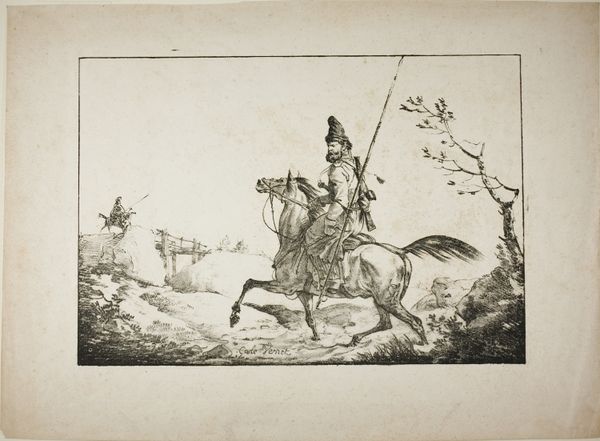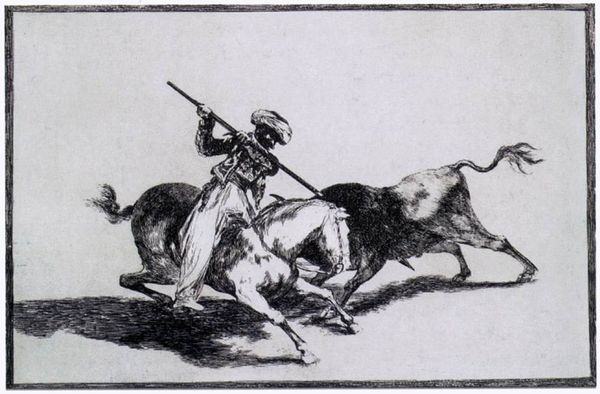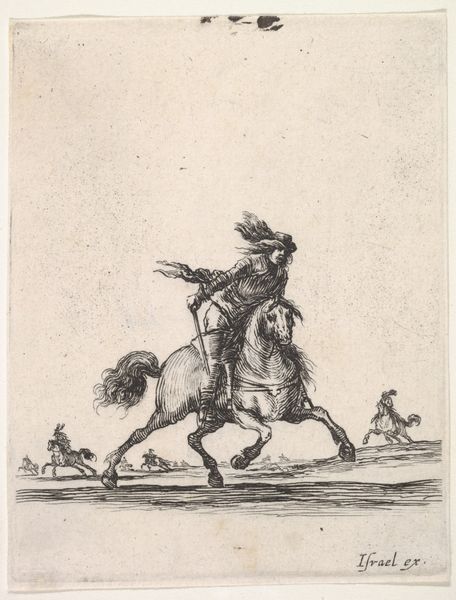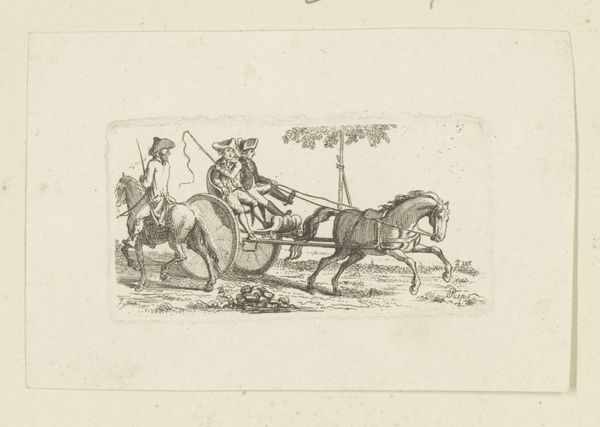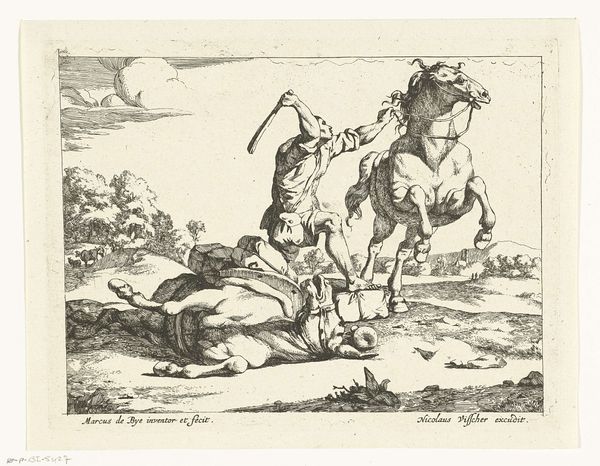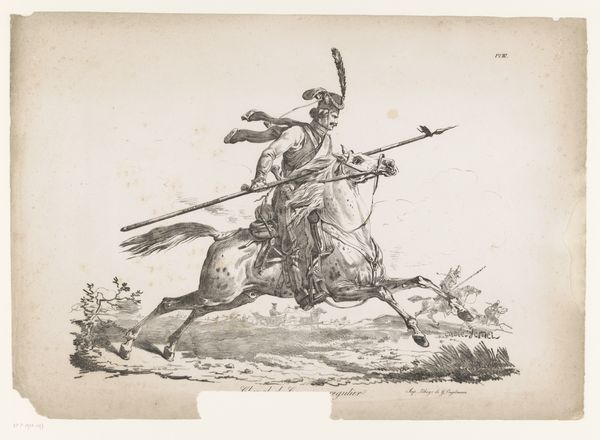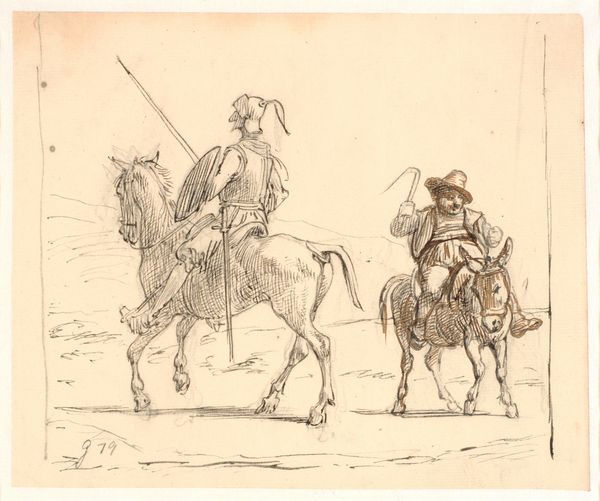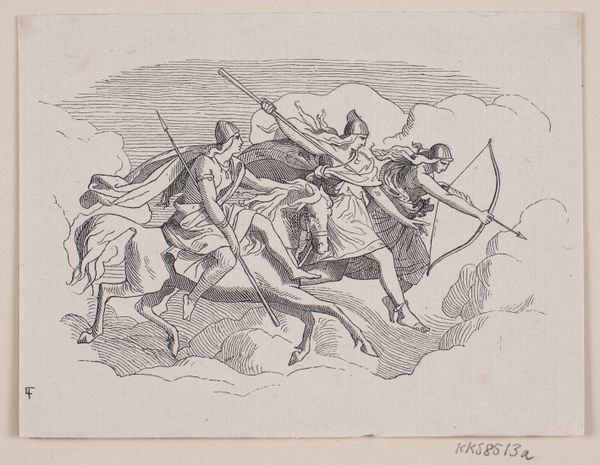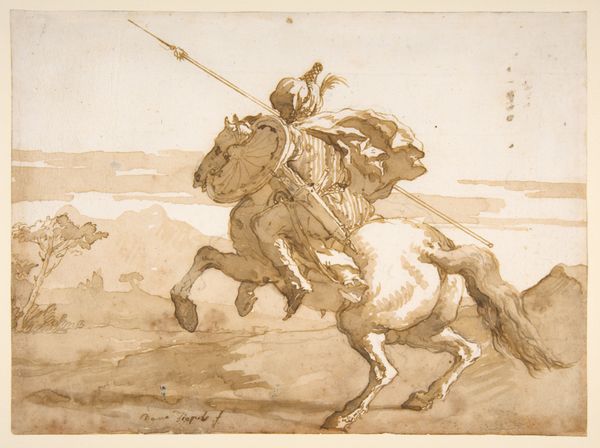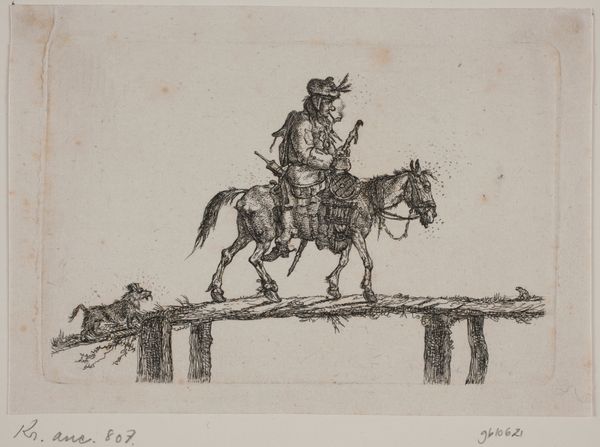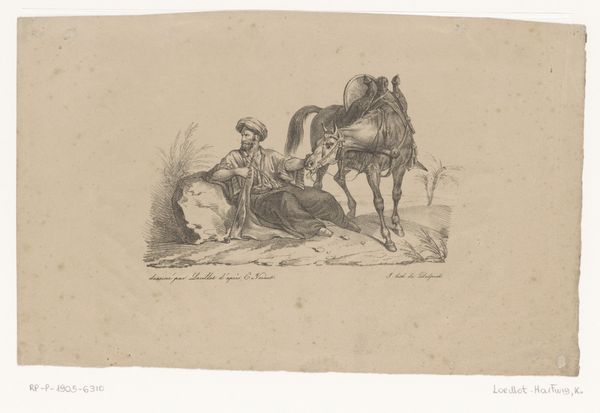
Den beåndede Maurer Gazul er den første til at spidde tyre i henhold til reglerne 1815 - 1816
0:00
0:00
print, engraving
# print
#
figuration
#
romanticism
#
line
#
history-painting
#
engraving
Dimensions: 243 mm (height) x 349 mm (width) (plademaal)
Editor: This is Francisco Goya's "Den beåndede Maurer Gazul er den første til at spidde tyre i henhold til reglerne," made around 1815-1816. It’s an engraving, and it feels incredibly dynamic, even violent. The horses especially seem caught in a frenzy. How do you interpret this work? Curator: Well, looking at it through a critical lens, Goya's bullfighting series, "La Tauromaquia," isn't just about the spectacle; it's a commentary on power, ritual, and national identity. The "Moor Gazul" image is fascinating because it brings up the complex history of the Iberian Peninsula. Do you notice the Moorish attire of the bullfighter? Editor: Yes, it’s striking. It makes me wonder, is Goya romanticizing a past era, or is there a deeper commentary? Curator: Precisely! Goya’s artistic choice speaks to Spain’s complicated relationship with its Moorish past. On one hand, it could be a nod to the historical influences that shaped Spanish culture. On the other hand, consider the political climate of the time: Spain was emerging from the Peninsular War. Reflect on who is typically forgotten when talking about these periods. Editor: That makes sense. Placing it in that context, I can see how the work operates on several levels simultaneously—celebrating Spanish heritage, but perhaps also hinting at cultural and racial tensions. Curator: Exactly! Goya's images can be a lens for understanding intersectional themes of cultural identity and power dynamics in post-colonial Spain. And thinking about who is involved and who benefits, where might we see similar themes in our current world? Editor: I hadn’t considered that. I am starting to see this image isn't just a historical depiction, but rather a multi-layered statement about Spanish identity. Thanks for providing that critical and intersectional perspective. Curator: My pleasure! It’s in these layers where the power of art truly resides: inviting us to dissect historical and cultural assumptions that resonate even today.
Comments
No comments
Be the first to comment and join the conversation on the ultimate creative platform.
